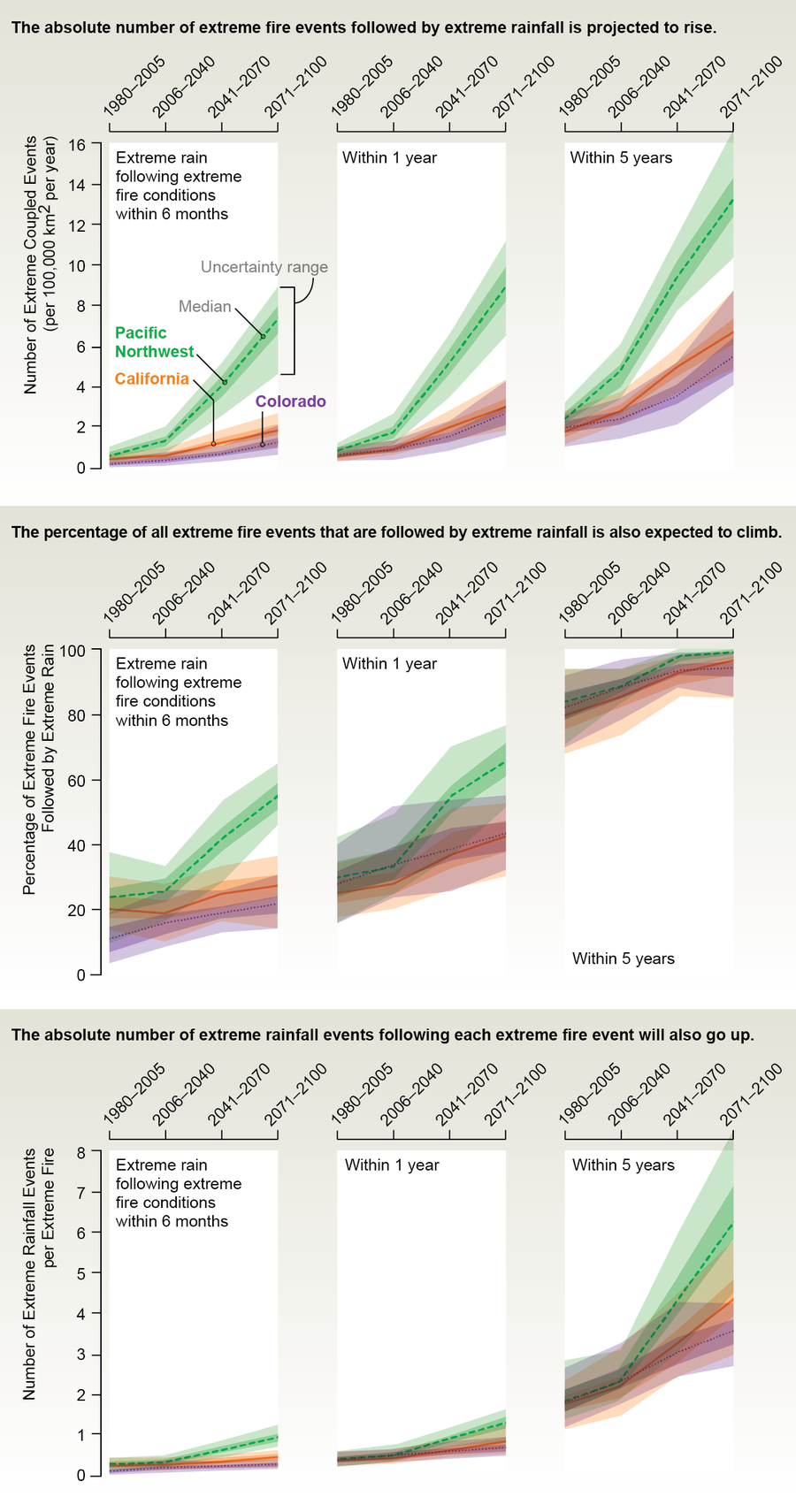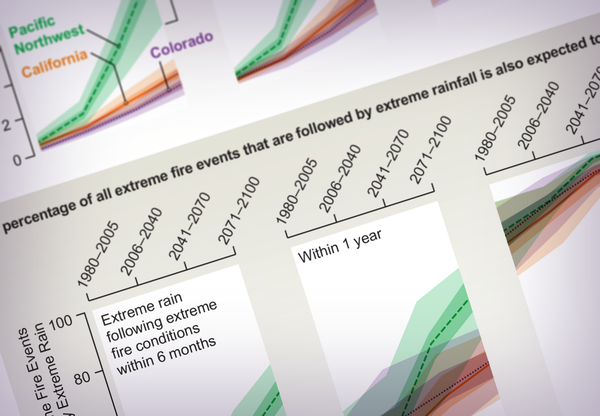Climate change tends to bring out the worst in the weather, be it extreme cold or heat, rain or fire. A new study found that the warming atmosphere increases the likelihood that a wildfire in the Western U.S. will be followed by intense rainfall. This confluence of events raises the risk of landslides and flash floods.
“Once you've had a wildfire burn through, you kill off all the vegetation, and you don't have any root structures there holding the soil in place, so it's a lot more vulnerable,” says University of California, Santa Barbara, climate scientist Samantha Stevenson, who was a co-author on the study.
The fires aren't causing the storms, but the same rising temperatures that lead fires to become more severe allow the atmosphere to carry more moisture, causing rain events to dump more water quickly. “We're talking about superstrong rainstorms, the 99.9th percentile,” Stevenson says.
On supporting science journalism
If you're enjoying this article, consider supporting our award-winning journalism by subscribing. By purchasing a subscription you are helping to ensure the future of impactful stories about the discoveries and ideas shaping our world today.

Credit: Jen Christiansen; Source: “Climate Change Increases Risk of Extreme Rainfall following Wildfire in the Western United States,” by Danielle Touma et al., in Science Advances, Vol. 8, No. 13; April 1, 2022 (data)
